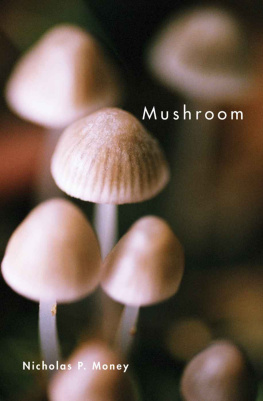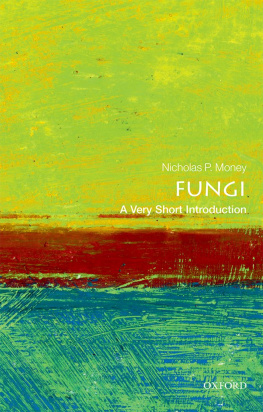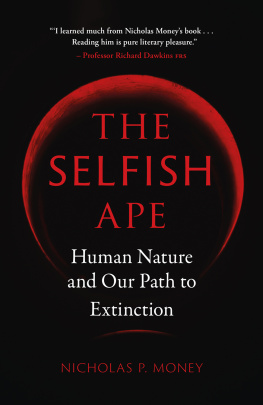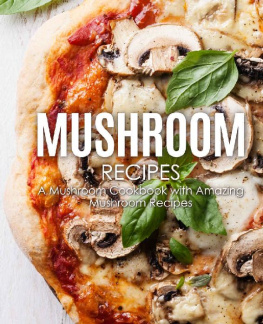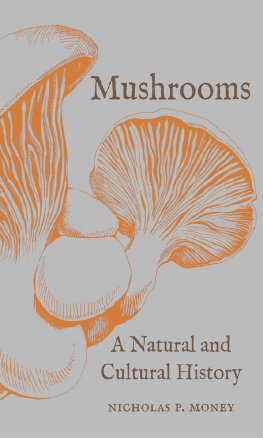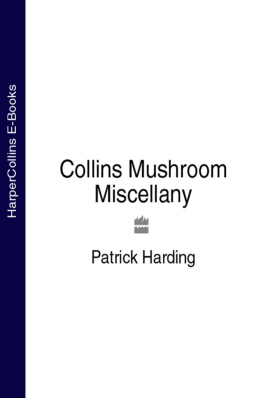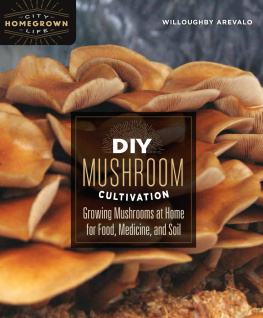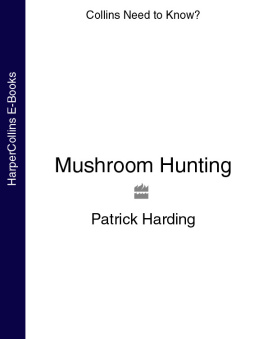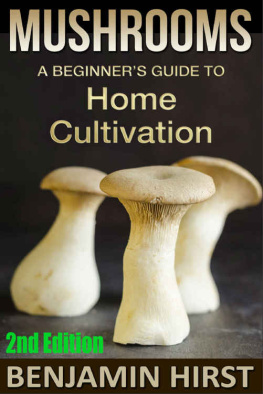MUSHROOM
By the Same Author
The Triumph of the Fungi:
A Rotten History
Carpet Monsters and Killer Spores:
A Natural History of Toxic Mold
Mr. Bloomfields Orchard:
The Mysterious World of Mushrooms, Molds, and Mycologists

Oxford University Press, Inc., publishes works that further
Oxford Universitys objective of excellence
in research, scholarship, and education.
Oxford New York
Auckland Cape Town Dar es Salaam Hong Kong Karachi
Kuala Lumpur Madrid Melbourne Mexico City Nairobi
New Delhi Shanghai Taipei Toronto
With offices in
Argentina Austria Brazil Chile Czech Republic France Greece
Guatemala Hungary Italy Japan Poland Portugal Singapore
South Korea Switzerland Thailand Turkey Ukraine Vietnam
Copyright 2011 by Oxford University Press, Inc.
Published by Oxford University Press, Inc.
198 Madison Avenue, New York, New York 10016
www.oup.com
Oxford is a registered trademark of Oxford University Press
All rights reserved. No part of this publication may be reproduced, stored in a retrieval system, or transmitted, in any form or by any means, electronic, mechanical, photocopying, recording, or otherwise, without the prior permission of Oxford University Press.
Library of Congress Cataloging-in-Publication Data
Money, Nicholas P.
Mushroom / Nicholas P. Money.
p. cm.
Includes bibliographical references and index.
ISBN 9780199732562 (hardcover: alk. paper)
1. Mushrooms. I. Title.
QK617.M644 2011
579.6dc22
2011009269
1 3 5 7 9 8 6 4 2
Printed in the United States of America
on acid-free paper
For Diana
Nature alone is antique, and the oldest art a mushroom.
Thomas Carlyle (17951881, Scottish essayist)
Some day the delights of a mushroom hunt along lush pastures and rich woodlands will take the rank of the gentlest craft among those of hunting, and may perchance find its own Izaak Walton.
Charles McIlvaine, One Thousand American Fungi (1900)
a sun struck stinkhornsticky with fliesthrusts up underthe skirt of an oak
Tom Pickard, Stinkhorn, from Hole in the Wall:
New & Selected Poems (Chicago: Flood Editions, 2002)
Preface
As you will have gathered from the title, this is a book about mushrooms. Mushrooms are fungal sex organs and the most wondrous inventions of the last billion years of evolutionary history on earth. If you have missed out on these elemental facts of life, theres no reason for self-flagellationthe next 200 or so pages will soon bring you up to speed.
Mushrooms that appear overnight in a meadow or on a suburban lawn are a marvelous sight. Their growth process is pneumatic, with the inflation of millions of preformed cells from a button extending the stem, pushing earth aside, and unfolding a cap above the dewy grass. Once exposed, a mushrooms gillsarrayed on the underside of its capshed an astonishing 30,000 spores per second, delivering billions of microscopic particles into the air in a single day, cells that may be capable of spawning the largest organisms on the planet. Mushroom colonies, gargantuan or lilliputian, burrow through soil and rotting wood. They feed and spread wherever plants live and die. Roll over a rotten log or brush aside some damp leaves, and youll find white bundles of fungal filaments; squeeze a handful of forest topsoil and inhale its mushroomy fragrancethe rich perfume attending death and decay. The coloniesof many mushrooms hook into the roots of forest trees and engage in mutually supportive symbioses; others are pathogens that decorate their food sources with hardened hooves and fleshy shelves. Among the staggering diversity of mushroom-forming species, we find strange apparitions, including gigantic puffballs, phallic eruptions with revolting aromas, and tiny birds nests whose spore-filled eggs are splashed out by raindrops.
Yet, it is the poisonous effects of a handful of fungal metabolites, and the powerful hallucinogenic qualities of others, that account for the central place of mushrooms in mythology and their commonest associations in Western culture. In the twenty-first century, the latest generation of mushroom worshipers promotes the medicinal benefits of fungal extracts, and a global industry has evolved to market these elixirs for soothing every human ill. Mushrooms are also celebrated in modern cookery, and our appetite for wild and cultivated fruit bodies has enjoyed fantastic growth in the last decade. While the appearance of mushrooms in childrens stories and the countercultural infatuation with shrooms has made everyone more aware of the fungi, this familiarity may also have handicapped their scientific study. Indeed, despite their primal role in supporting planetary health, fungi remain the least studied and most poorly understoodkingdom of life.
Getting people to grasp the importance of other familiar groups of organisms can pose similar challenges for scientists. Consider insects. Everyone who has taken a biology class knows that there are millions of insect species and that they perform all manner of life-sustaining tasks, but the only arthropod of immediate concern is the cockroach waggling its antennae at you from the kitchen floor. Facts about all kinds of things can be explained to usmind-boggling, fascinating, consciousness-shattering conclusions about life and the universeyet we spend much more time thinking about how much to spend on a bottle of wine on the way home from work, the eternity of nothingness after death, and other daily trivia. But if you have the shopping questions covered, fed the cat, and dealt with your e-mails, I hope you enjoy reading this book half as much as I have enjoyed researching and writing it.
The eight chapters that follow are interwoven and include some cross referencing, but they may be read as independent essays. They explain what mushrooms are ().
Nicholas P. Money
Oxford, Ohio
January 2011
Acknowledgments
This book would not have been possible without access to the incomparable collection of mycological books and journals housed in the Lloyd Library and Museum in Cincinnati. Many of the illustrations in the book were scanned from originals in the Lloyds collection. My sincere thanks to Maggie Heran, director of the Lloyd, archivist Anna Heran, and other staff members for their help throughout this project. Mike Vincent (Miami University) and Mike Klabunde (College of Mount St. Joseph) provided indispensable assistance by translating Latin and Greek passages from original sources. Sushma Shrestha (Miami University) provided invaluable help by researching the medicinal mushroom literature that is discussed in the last chapter. Permission to reproduce Tom Pickards poem Stinkhorn was provided generously by Flood Editions, Chicago. I also thank my editor, Tisse Takagi, for her unstinting support of my work, and my previous editor, PeterPrescott, who helped develop the concept for this book. My wife and scientific collaborator, Diana Davis, read every word of the manuscript, and so please refer any objections to her as the responsible party. I disown any of the books errors and faults.
MUSHROOM
Chapter 1: Angels on the Lawn
How mushrooms develop
A grown-up neighbor in the English village of my childhood told stories about angels that sat upon our shoulders and fairies that lived in her snapdragons. Like the other kids, I searched her flowers for a glimpse of the sprites, but agnosticism imbibed from my parents quickly overruled this innocent play. Yet, there

